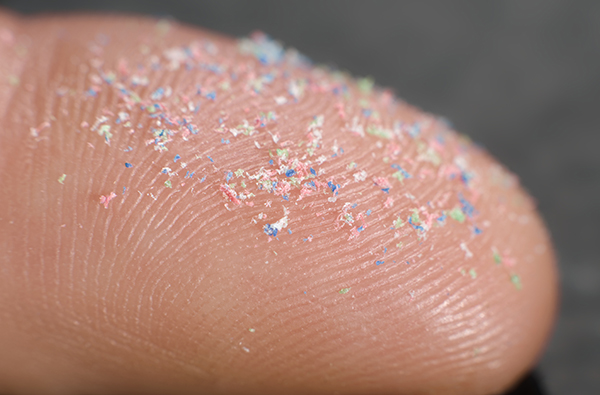Study: Microplastic contamination in human brains has increased 50 percent between 2016 and 2024
By avagrace // 2025-05-01
Tweet
Share
Copy

- A study in Nature Medicine reveals a 50 percent surge in microplastic contamination in human brains between 2016 and 2024, with brain tissue containing nearly 8 times more plastic than the liver or kidneys.
- Microplastics in dementia patients’ brains were 5x higher than in healthy brains, with sharp plastic shards found near inflamed areas tied to cognitive decline — raising concerns about neurological damage.
- Microplastics (from packaging, clothing, tires, etc.) now permeate air, water, food and human organs. Polyethylene (used in bags/food packaging) makes up 75 percent of brain contaminants.
- Rising dementia rates coincide with plastic proliferation. Microplastics may weaken the blood-brain barrier, trigger inflammation and physically harm brain cells — even in healthy individuals.
- While complete avoidance is impossible, solutions include filtering water, reducing plastic use, improving indoor air quality and supporting detox diets. Policy changes (production limits, biodegradable alternatives) are critical to curb the crisis.
Microplastics in the brain and their troubling link to dementia
The study suggested that polyethylene makes up 75 percent of brain contaminants. Polyethylene is the plastic used in shopping bags and food packaging, proof that everyday convenience has a hidden cost. The most alarming discovery came from brain samples of dementia patients. According to the study authors, the plastic concentrations in these samples were five times higher than in healthy brains – reaching 26,076 mcg per gram. These particles clustered near inflamed blood vessels and immune cells, areas directly tied to cognitive decline. While researchers caution that correlation doesn’t equal causation, the implications are impossible to ignore. If microplastics are accelerating neurological damage, the consequences for public health could be catastrophic. Plastic production has exploded since the mid-20th century, with global output now exceeding 300 million tons annually. Microplastics – particles smaller than five millimeters – come from degraded bottles, packaging, synthetic clothing and even car tires. They've been found in air, water, food, human blood, placentas and now the brain. This isn't just an environmental issue – it's a public health emergency. Rising dementia rates, now the seventh leading cause of death worldwide, coincide with the plastic boom. While lifestyle factors play a role, the study's findings demand scrutiny. The blood-brain barrier weakens with age and disease, potentially allowing more plastic infiltration. But even healthy individuals aren’t safe. Microplastics trigger inflammation, disrupt hormones and may physically damage brain cells. Eliminating exposure is impossible, but reducing it is critical:- Filter water: Reverse osmosis systems remove microplastics better than standard filters.
- Avoid plastic packaging: Opt for glass or metal.
- Dust and ventilate: Indoor air carries microplastics from furniture and fabrics.
- Support detox: Foods like cruciferous vegetables and omega-3s may help the body combat plastic toxicity.
More related stories:
STUDY: Microplastics in the body may aggravate cancer and spur metastasis. Bottled water found to contain alarming levels of plastic particles, microplastics. Over 90 percent of salt brands contain MICROPLASTICS, scientists find. Polluted bodies: Researchers find shocking levels of microplastics in CHILDREN. Billions of microplastics particles are swirling around in the atmosphere. Sources include: NaturalHealth365.com Nature.com TheGuardian.com Brighteon.coTweet
Share
Copy
Tagged Under:
brain function dementia pollution research dangerous mind plastic pollution microplastics blood brain barrier badhealth badpollution brain damaged brain samples
You Might Also Like
RFK Jr. shatters mainstream narratives on measles, sparks heated debate on vaccines and autism
By Willow Tohi // Share
Drinking matcha tea can reduce anxiety
By News Editors // Share
Overdue Cascadia megaquake may drown Pacific Northwest coast in minutes, experts warn
By Cassie B. // Share
Europe’s brush with darkness: Blackout sparks renewed debate over renewable reliability
By Willow Tohi // Share
Health Ranger Report: Dr. Alphonso Monzo warns about the hidden dangers of 5G and EMF pollution
By Kevin Hughes // Share
Recent News
Factory farm ANTIBIOTIC ABUSE fuels deadly SUPERBUG SURGE
By ljdevon // Share
Israeli government faces fury over wildfire failures amid Gaza war distractions
By isabelle // Share










